#philip epstein
Text
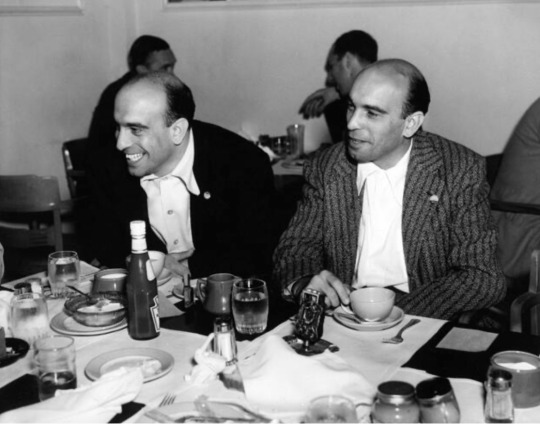
Screenwriter Julius J. Epstein (August 22, 1909 – December 30, 2000), pictured (right) with his brother Philip having lunch at Warner Bros. while working on the final script for THE STRAWBERRY BLONDE (1941).
7 notes
·
View notes
Text

January 24, 1998: The UK premiere of Saturday Night closes after 38 performances.
2 notes
·
View notes
Text

This moment really inspires the greatest artist out there.
#Gabriela Rodríguez Epstein#the owl house#toh#toh spoilers#the owl house spoilers#season 3#s3#thanks to them#toh hunter#hunter wittebane#hunter the golden guard#philip wittebane#emperor belos#hunter noceda
375 notes
·
View notes
Text
#Netflix#Scoop#trailer#Prince Andrew#BBC interview#Philip Martin#Netflix film#April 5#2024#Mohnish Singh#Gillian Anderson#Rufus Sewell#Emily Maitlis#Jeffrey Epstein#Virginia Giuffre#behind-the-scenes#Sam McAllister#Buckingham Palace#Billie Piper#real events#journalism#Newsnight appearance#Twitter#Keeley Hawes#Peter Moffatt#Geoff Bussetil#exclusive streaming
4 notes
·
View notes
Photo

The Strawberry Blonde (1941)
During the height of the Old Hollywood Studio System – when studios themselves contracted directors, actors, writers, and other craftspersons – Warner Bros. found its niche as the “dark” studio. Warners might not have invented the gangster picture, but they codified its archetypes and tropes, becoming synonymous with the subgenre. In the early 1940s, director Raoul Walsh (a film noir pioneer; 1940’s They Drive by Night and 1941’s High Sierra) was nearing the peak of his career and actor James Cagney (1938’s Angels with Dirty Faces, 1949’s White Heat) was perhaps Warners’ most bankable star. Walsh was known for his proto-noir works and crime dramas; Cagney arguably the era’s definitive gangster actor. By 1941, both needed something different to work with.
Adapted by brothers Julius J. and Philip G. Epstein from James Hagan’s pastoral stage play One Sunday Afternoon, The Strawberry Blonde was exactly what both men sought. The Strawberry Blonde – often billed as a romantic comedy because it is a much lighter adaptation than 1933’s One Sunday Afternoon (starring Gary Cooper and Fay Wray) – is a celebration of simple, unadorned love. Though not a gag-a-minute comedy, Walsh’s uncharacteristic film shines through the performances from Cagney and especially Olivia de Havilland (three years removed from The Adventures of Robin Hood and two from Gone with the Wind). It is a joyous and nostalgic production; perhaps it should be no wonder it was a career favorite film for Walsh and a highlight for Cagney.
The Strawberry Blonde occupies two time periods. The film is set in New York City sometime in the late nineteen aughts or early 1910s, but primarily told through flashback during the late 1890s. In the flashback, Biff Grimes (James Cagney) aspires to become a dentist and yearns for a strawberry blonde socialite named Virginia Brush (Rita Hayworth; whose singing voice is, in a fleeting scene, not dubbed for the only time in her career). Along with his buddy and soon-to-be business partner, Hugo Barnstead (Jack Carson), they go on a messy double date with Virginia and her friend, the nurse and suffragist-leaning Amy Lind (Olivia de Havilland). Upon first impressions, Biff considers Amy to be the less attractive, amusing, and sociable girl. When fate – or, more precisely, Hugo’s duplicity – intervenes, Biff and Amy find love together and marry. While Biff begins studying for a dentistry diploma by mail correspondence, the two navigate financial and personal travails. Despite the marriage, Biff harbors a stewing resentment towards Hugo and a lingering covetousness towards Virginia apparent in the film’s bookends.
Among the bit players are Alan Hale as Biff’s father; George Tobias as Biff’s and Amy’s Greek immigrant friend, Nicholas Pappalas; Una O’Connor as Mrs. Mulcahey; and George Reeves (a future television Superman) as a belligerent, loudmouth, mustachioed college man who – due to his sweater – I choose to believe is from Yale. The four actors listed here, all Warner Bros. contractees at the time, each have their memorable moments.
The Strawberry Blonde serves as a memorialization to the time of Walsh and Cagney’s upbringing, similar to Vincente Minnelli’s Meet Me in St. Louis (1944) at Metro-Goldwyn-Mayer (MGM) and, if one wants to draw a modern throughline, the Duffer Brothers’ Stranger Things. In many ways, the film also feels like a musical. There are numerous diegetic performances of songs – whether by our central cast or a band – popular during the turn of the century. “The Band Played On” (from which the film derives its title; “Casey would waltz with a strawberry blonde / and the band played on”), “Bill Bailey”, “The Fountain in the Park”, “Meet Me in St. Louis”, “Wait ‘Till the Sun Shines, Nellie”, and much more fill the soundtrack. Composer Heinz Roemheld’s (1942’s Yankee Doodle Dandy, 1947’s The Lady from Shanghai) work adapts many of these songs into a boisterous, energetic score. Roemheld knows when to dial his orchestra back during the film’s most intimate scenes, but this wall-to-wall score evokes the period. Ostensibly, according to the screenplay, it was a time of romantic walks and live music performances in almost all social settings. In a sense, these decisions make The Strawberry Blonde into a sort of half-musical.
With his most recent movie being the film noir High Sierra (1941) with Ida Lupino and Humphrey Bogart, the transition from a largely outdoors-set crime drama to interior-heavy romantic comedy nevertheless suited Walsh. Walsh receives immeasurable help from one of the best cinematographers ever in James Wong Howe (1941’s Abe Lincoln in Illinois, 1963’s Hud). Howe’s signature high-contrast, low key lighting – generally associated with film noir – is not present much in The Strawberry Blonde. But what Walsh and Howe accomplish is making a bygone decade contemporary again. Outside the film’s romantic scenes including Cagney and de Havilland or Cagney and Hayworth, the film’s frames overflow with activity. With masterful use of blocking and mise en scène in these moments, Walsh and Howe’s frames are always dynamic, moving – but not swooping – alongside masses of extras and supporting characters rather than staying put, as if taking still photography. A static camera during Biff’s dates out on town would immediately render The Strawberry Blonde as a dusty artifact, a creaky throwback. Stationary cinematography has its uses when there are plenty of actors on-screen, but such a decision would make this remake too much like its 1930s original. Instead, in conjunction with Orry-Kelly’s (1951’s An American in Paris, 1959’s Some Like It Hot) outstanding costume design, the past leaps out of the history books and memories to be present again.
youtube
The notable instances in which Walsh and Howe keep their camera as rigid as possible are when Biff finds himself at the park bench where he and Amy first met. The set for the park also happens to be art director Robert M. Haas’ (1941’s The Maltese Falcon, 1949’s The Inspector General) plainest craftsmanship in the entire film. These scenes are the most obviously soundstage-bound moments – the too-perfect grass, the flatness, and lack of discernible lighting – despite the extras strolling in the deep background. The Strawberry Blonde’s park scenes mark the beginning and the renewal of Biff and Amy’s relationship, rendering them arguably the romantic highlights of the film. The contrast from these scenes to places such as the beer garden, the Central Park Zoo, or the Statue of Liberty make them the least “present” of the film. Some viewers less experienced in Old Hollywood (or those who, wrongfully, dismiss the style altogether) might complain about the obvious artifice in those park bench scenes with Biff and Amy, but my goodness does the aesthetic contrast make one take notice. Not only that, but the Epstein brothers’ dialogue for Cagney and de Havilland here is gently funny, and filled with warmth.
James Cagney, with his vaudeville background, was known for his physically exaggerated performances that nevertheless maintained a raw emotional core. That works to his benefit throughout The Strawberry Blonde, in which the character of Biff often sounds calm and measured, but his words bely fearfulness and bitterness. Despite the tough-guy gangster persona he often played in Warners’ gangster pictures, there are shades of Cagney’s later performance as George M. Cohan in Yankee Doodle Dandy here. Look at the grace in his dancing at the beer garden, a seemingly spontaneous cartwheel upon learning wonderful news, and how he putters about restlessly when conversing with Amy for the first time while expecting Virginia to show up. But also notice his weariness during the film’s bookends, how he accepts – but does not despair about – his station in life.
Olivia de Havilland is Cagney’s equal in this film, and a great foil to Rita Hayworth (whose character of Virginia is depicted as more conventionally attractive, but possesses a casual cruelty and vanity that gradually reveals itself). A middle-class nurse is an unusual role for an actress known at the time for mostly playing rich women and/or Errol Flynn’s love interest in swashbucklers or Westerns. As Amy, de Havilland curiously receives two “introductory” scenes in the film – both radically different from the other in storytelling function, reflecting the rarity of a second first impression and Biff’s tendency to see only surface details. Seemingly reserved but playful when she wishes to be, de Havilland’s Amy is an absolute delight of a character from the moment she appears. One crucial moment late in the film – in which Biff is dancing around an implied truth so that he can soften the blow for Amy – is heartbreaking acting from both. De Havilland’s movement and her glance outside the window in that scene epitomizes the agony in that moment. Knowing both actors’ resumes, I initially came into The Strawberry Blonde thinking that, on paper, Cagney and de Havilland would be a romantic mismatch. What a happy surprise it is to be completely wrong.
Unlike contemporary films that might take a nostalgic trip to a decade like the 1970s, ‘80s, or ‘90s, The Strawberry Blonde feels, at times, truly transporting. The incredible attention to visual details and especially the diegetic music (too often those newer nostalgia-driven movies resort to pin drops of non-diegetic music) help immensely. Though the film suggests an immigrant experience that would have been appropriate for turn-of-the-century New York, The Strawberry Blonde declines to say more about it – most likely a result of the original source material (“pickaninny”, a derogatory term that refers to black or dark-skinned children, is casually used in a song’s lyric).
At the center of this rich period detail lies an honest love between two people flowing through life’s currents. Sometimes their love is troubled with melodramatics, but they find ways to comfort and help the other with humor and goodness. Sure, it can be sentimental stuff. But it endures an upsettingly difficult test. The Strawberry Blonde has no designs to being other than a sincere love story and a fond lookback of another time. As such, it triumphs – with just one more chorus of “The Band Played On”, if you please.
My rating: 7.5/10
^ Based on my personal imdb rating. My interpretation of that ratings system can be found in the “Ratings system” page on my blog (as of July 1, 2020, tumblr is not permitting certain posts with links to appear on tag pages, so I cannot provide the URL). Half-points are always rounded down.
For more of my reviews tagged “My Movie Odyssey”, check out the tag of the same name on my blog.
#The Strawberry Blonde#Raoul Walsh#James Cagney#Olivia de Havilland#Rita Hayworth#Jack Carson#George Tobias#Una O'Connor#George Reeves#Lucile Fairbanks#Julius J. Epstein#Philip G. Epstein#James Wong Howe#Heinz Roemheld#Hal B. Wallis#Orry Kelly#WB100#TCM#My Movie Odyssey
8 notes
·
View notes
Text
See pinned post for the full bracket!
#best best adapted screenplay tournament#oscars#academy awards#best adapted screenplay#casablanca#philip g. epstein#julius j. epstein#howard koch#the godfather#francis ford coppola#mario puzo#poll#bracket tournament#polls#brackets
3 notes
·
View notes
Text
Review: Casablanca
The film has a peculiar magic to it, and because of its pace the richness of its sense of detail often goes unnoticed.
by Jeremiah Kipp
December 13, 2008

Photo: Film Forum
y the time we arrive at Rick’s Café Américain, a certain paranoia and vivacity has been set—and then comes romance, in the form of piano player Sam (Dooley Wilson) and his rendition of “It Had to Be You” as the camera makes a slow dolly toward him through the bustling crowd and wafts of cigarette smoke. It’s easy to fall into the rhythms of Casablanca, long before the appearance of the star-crossed lovers and their damaged idealism, or most of the great character actors who populate the world of Michael Curtiz’s film make their presence felt—such as Sydney Greenstreet’s bemusedly sinister Signor Ferrari and Peter Lorre’s nervously sweaty Ugarte.
The film has a peculiar magic to it, and because of its pace the richness of its sense of detail often goes unnoticed. Audiences make generalizations about Casablanca because of how all those little particulars add up. Film lovers discuss it with a starry look in their eyes, as if they were describing their first kiss or a lost love, because something in the film touches them, perhaps its theme of dignity and decency, of rediscovered idealism. Men seem almost instinctively drawn to Humphrey Bogart’s Rick because he’s a man of integrity, while women seem to dig him because he’s a man of mystery.
There’s also something else to Rick, and it’s visible in his hangdog face. When we first see him he’s playing chess by himself, and the light picks up on a small glimmer of spittle on his lips. Bogart was always a sputtering actor, which made him so great as a B-movie villain cowering for his life before getting shot to death by the hero. But his sudden stardom revealed something incredibly human, and as such relatable, about him. He seemed more like a real man than, say, the frequently idealized characters played by Errol Flynn. The fact that Bogart was a movie star says a lot about his particular charisma—the kind that’s earned by an actor who’s paid his dues and figured out who he is. Rick is his own man, and like those refugees at the start of the film who watch a plane fly above Casablanca, his life experience is written on his face.
Rick is first seen with his back turned to a local who’s had too much to drink. “Rick, where were you last night?” the man says, to which Rick replies, “That was so long ago, I don’t remember.” Even though there’s no overt sex in Casablanca, it’s constantly implied. When Rick orders his bartender to take a girl home in a cab, he asks him to come right back. In the scenes between Rick and Captain Renaud (Claude Rains), the men talk about women as if they were baubles to be admired, then dropped. Renaud also fawns over his friend with the most extravagant, slightly ironic hero-worship, and in a classic line from the film, Rains’s classy, debonair captain tells Ingrid Bergman’s Ilsa Lund that if he were a woman, he’d also be in love with Rick.
It’s astonishing when Bergman materializes some 30 minutes into the film, after Ugarte has whimpered for his life and been shot dead, and Rick has proclaimed that he “sticks his neck out for no one” and came to Casablanca “for the waters.” The shot that first captures the glamorous Bergman doesn’t call attention to itself, or highlight her in the frame, and yet we can’t take our eyes off her. It’s strange, because the shot is very wide, the dress she wears is plain, and she looks nervous and hesitant. How can a woman be so luminous when she’s moving her face back and forth like a deer transfixed by car headlights? When the audience finally sees Ila in close-up, sitting at a table in Rick’s Café with her husband, Victor Laszlo (Paul Henreid), her face is somewhat round, her eyes are sharp, and her voice has a certain breathless quality. Bergman, like Bogart, captivates us because of that ineffable thing we call presence. In this moment, the audience instantly understands Rick and Ilsa through the actors’ faces.
If audiences are to admire Rick and Bogart, then we’re meant to adore Ilsa and Bergman. Victor is set up as a great freedom fighter, yet he feels more like an abstract idea or plot point, not unlike the letters of transit that allow people safe passage out of Casablanca. Ilsa, like Rick, is a full person, with vulnerability in her eyes and a magnetism to her presence that goes beyond gauzy lenses and classical three-point lighting. Naturally they’re drawn to one another. She has a lot of big moments in the film, but a lot of small ones too that are just as memorable, such as that tiny, mischievous gleam in her eyes when she asks Sam to play some of the old songs.
There are, of course, the close-ups of Rick and Ilsa when they see each other for the first time as Sam plays “As Time Goes By,” but there’s also the furtive glances that they throw at one another before their eyes flicker back to the table, as they sit chatting about precedents being broken with Victor and Renaud. Casablanca is about striving for something meaningful. But it’s also a tale of sacrifice in the name of greater good, set in a world of shadows, booze, cigarette smoke, and memories. The love story at its center of allows heroes to tap into something special within themselves, and if they lost it in Paris, somehow they got it back in Casablanca. The film is all of those things at once, but it’s also about these people, these faces, and all the little moments between them. It reminds us that when we’re in relationships, we learn more about who we are reflected in others, and when we go to the movies, the great ones can do the same thing.
Score:
Cast: Humphrey Bogart, Ingrid Bergman, Paul Henreid, Claude Rains, Conrad Veidt, Sydney Greenstreet, Peter Lorre, Dooley Wilson Director: Michael Curtiz Screenwriter: Julius J. Epstein, Philip G. Epstein, Howard Koch Distributor: Warner Bros. Running Time: 102 min Rating: NR Year: 1942 Buy: Video, Soundtrack
#Humphrey Bogart#Ingrid Bergman#Paul Henreid#Claude Rains#Conrad Veidt#Sydney Greenstreet#Peter Lorre#Dooley Wilson#Michael Curtiz#Michael Curtiz Screenwriter: Julius J. Epstein#Philip G. Epstein#Howard Koch#Warner Bros.#Jeremiah Kipp#Casablanca#Slant Magazine
3 notes
·
View notes
Text
Glanville suspended for attending Eurovision party with disgraced former councillor Thomas Dewey – and Mandelson stayed involved with Epstein long after Epstein pleaded guilty to child trafficking, yet remains a key Starmer adviser
Hackney mayor Philip Glanville has been suspended over a photograph of him attending a Eurovision party with convicted paedophile and former Hackney councillor Thomas Dewey. The photograph was taken around two weeks after the party was made aware of Dewey’s arrest for possession of child rape images and a day or so after the police informed the Hackney council.
At the time, the Labour party allowed Dewey to stand as a council candidate, despite the arrest – and has since locked women members out of Labour’s communication systems and threatened them with disciplinary action if they discuss the Dewey case and Labour’s failings. However, it seems the party considers the photo grounds for suspension even though Dewey had not been convicted when it was taken.
The response is a stark contrast to the Starmer regime’s behaviour toward Peter Mandelson. Mandelson remained closely involved with paedophile Jeffrey Epstein after Epstein had pleaded guilty and been convicted of child sex trafficking.
A 2019 internal JP Morgan report, filed to a US court this year, described the ongoing relationship:
Jeffrey Epstein appears to maintain a particularly close relationship with Prince Andrew the Duke of York and Lord Peter Mandelson, a senior member of the British government.
Yet Keir Starmer has insisted that Mandelson will remain a close adviser.
Starmer has also failed to protect victims of abuse and sexual harassment on a number of occasions, including covering up the ‘criminal’ and ‘sadistic’ abuse of vulnerable Muslim women fleeing domestic violence by a party staffer in a relationship with a (then-) front-bench MP, revealed by whistleblower Elaina Cohen.
Starmer has also welcomed confirmed racist and sex-pest MP Neil Coyle back into the party in time to ensure Coyle was able to be reconfirmed as the party’s candidate in Bermondsey and Old Southwark – and sheltered at least two alleged sex pests on his front bench for many months.
SKWAWKBOX needs your help. The site is provided free of charge but depends on the support of its readers to be viable. If you’d like to help it keep revealing the news as it is and not what the Establishment wants you to hear – and can afford to without hardship – please click here to arrange a one-off or modest monthly donation via PayPal or here to set up a monthly donation via GoCardless (SKWAWKBOX will contact you to confirm the GoCardless amount). Thanks for your solidarity so SKWAWKBOX can keep doing its job.
1 note
·
View note
Text
Prince Andrew, Duke of York
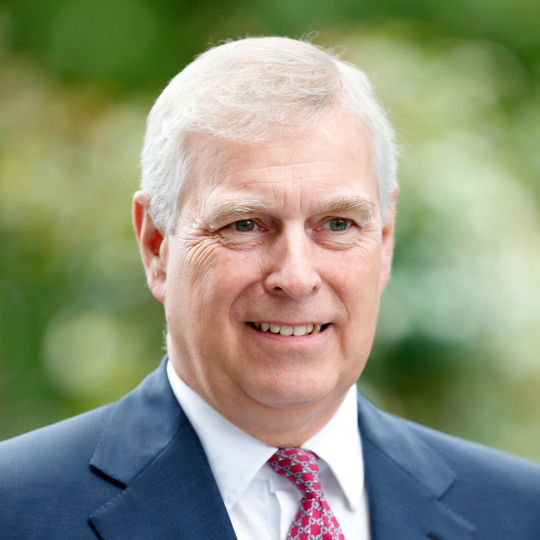
Physique: Average Build
Height: 6'0"
Prince Andrew, Duke of York, KG, GCVO, CD (born 19 February 1960 -) is a member of the British royal family, the third child and second son of Queen Elizabeth II and Prince Philip, Duke of Edinburgh, and a younger brother of King Charles III. Formerly regarded as the beloved son of the queen and decorated naval officer, whose behavioral antics throughout his career as a Royal brought scandal and disgrace to the 1200-year legacy of the British Royal Family.

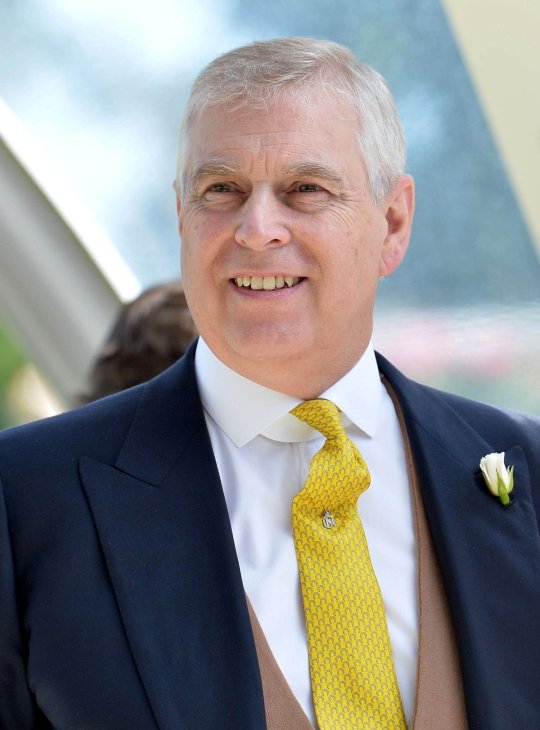
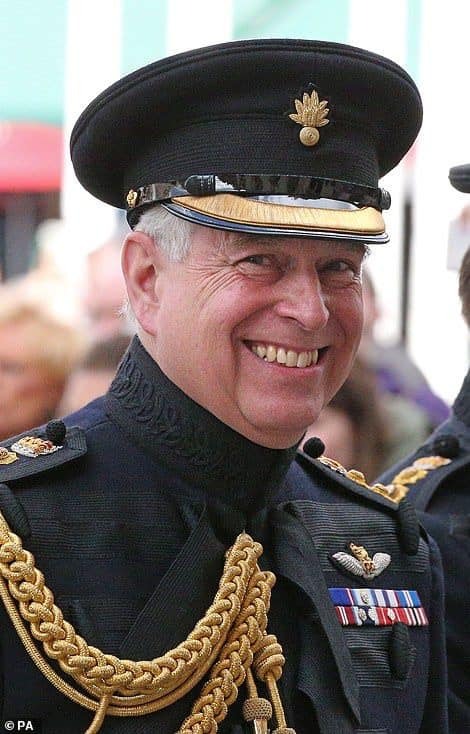


When I first took note of Prince Andrew, I thought he was the most fuckable member of the British Royal family. Well… until the whole Jeffrey Epstein scandal and King Charles III’s ascension to the throne. After that, I found out he was arrogant, self-indulgent, and thoughtless of other people’s feelings and does stupid things out of hubris, to show that he can do them. Plus the 72 teddy bears on the bed thing. Still there is something about Randy Andy that makes me still want to fuck him. I just can’t explain it.
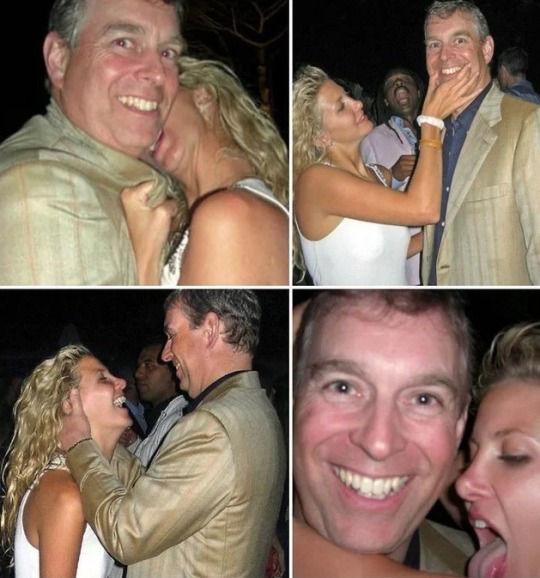
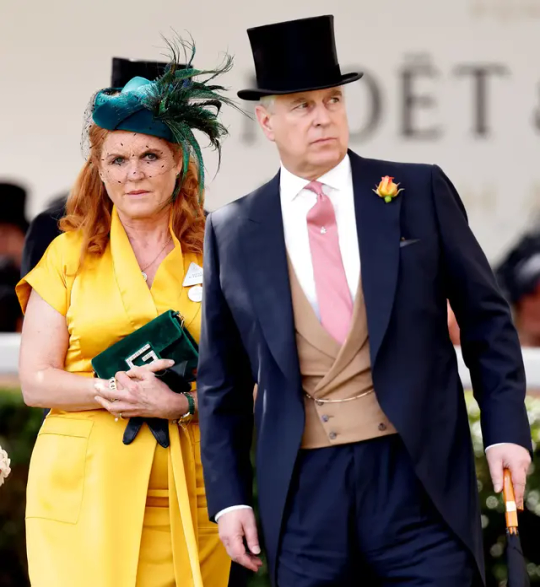
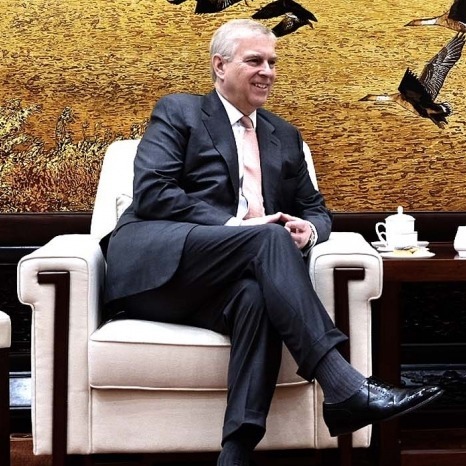

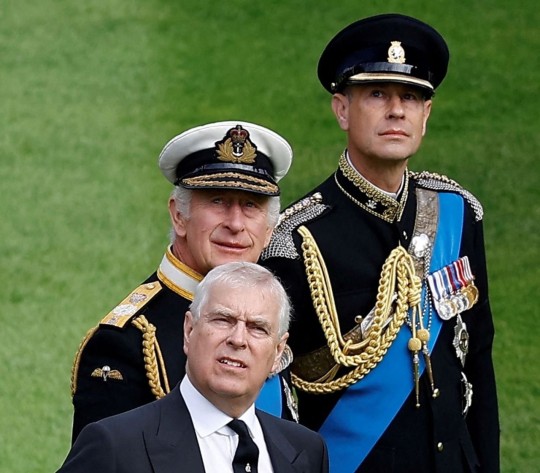
Currently, the disgraced Duke of York is stripped of his military and royal titles, stepped down from public duties and is living with his ex Fergie, including his daughters. Rumor has it, he’s looking to “reinvent himself.” And I’m more than ready to welcome him here and reinvent him… with my penis. What? I want to fuck a prince.
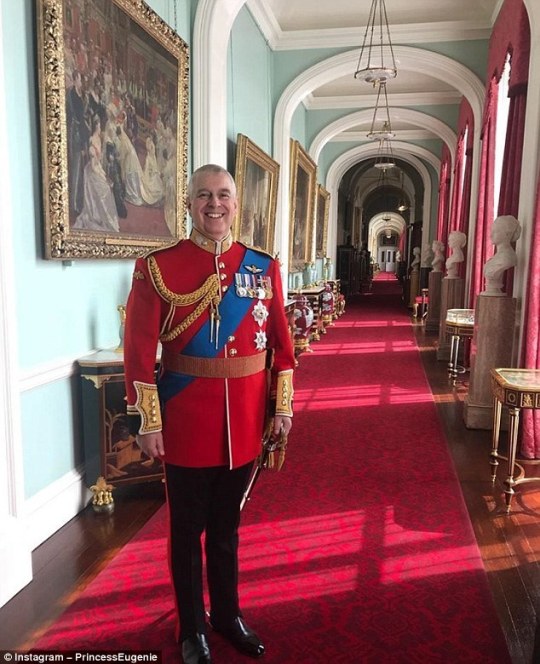
98 notes
·
View notes
Text


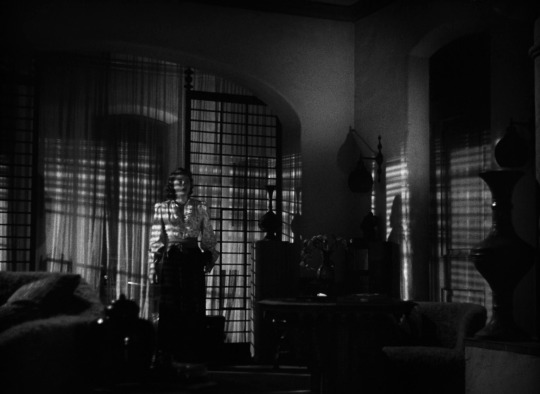



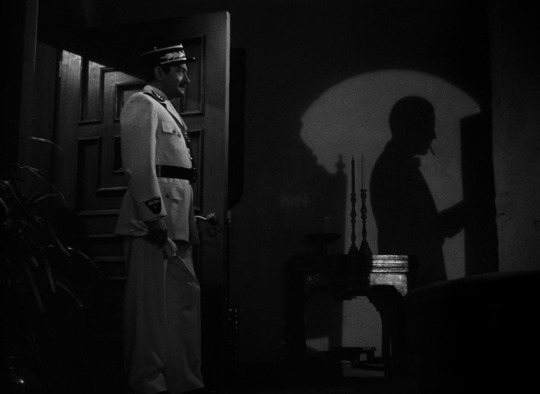


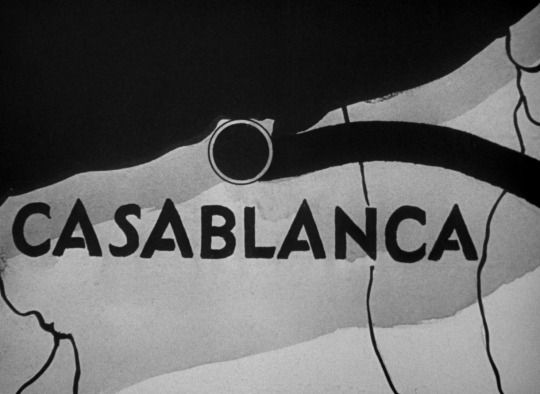
"Play it!"
Casablanca, 1942.
Dir. Michael Curtiz | Writ. Julius J. Epstein, Philip G. Epstein & Howard Koch | DOP Arthur Edeson
125 notes
·
View notes
Text
Remembering Julius and Philip Epstein, co-writers of CASABLANCA along with Howard Koch. The Epstein Brothers were #botd in 1909.

10 notes
·
View notes
Text

February 10, 2009: Saturday Night at London's Jermyn Street.
1 note
·
View note
Text
youtube
THE BEATLES - NEVER BEFORE HEARD RINGO STARR PERSONAL TAPE RECORDINGS FROM 1966 TOUR - SAMPLE CLIP.
Two Philips C-90 cassette tapes and one Philips C-60, two with handwritten labels (very likely in the hand of Ringo Starr) 'INDIA' and 'MAHARESHI' the third with a sticker affixed bearing handwritten label 'MANILLA (sic) INDIA'.
All three contain recordings made by Ringo Starr, likely on a personal tape recorder (see here for image of Ringo returning from tour carrying what appears to be a tape recorder), of various events throughout (mostly) 1966. All recordings have very likely never before been published. Approx 248 minutes of recordings across the tapes.
At one point Ringo describes the tapes as 'a talking record of our trip to Germany and Japan'.
Across the three tapes, which contain hours of candid conversations with The Beatles, Brian Epstein and others within the inner circle during that period, a small selection of 'highlights' includes:
- Brian Epstein discussing how to avoid paying tax/import/export charges when leaving Japan.
- Numerous humorous interludes with Ringo recording his thoughts on the tours - often in an array of voices.
- Band discussions of the set list for the Japan tour. - Recordings from the Budokan concerts (segments of 'If I Needed Someone' and 'Day Tripper') possibly from stage or close to stage itself, seemingly more likely from the band listening back to the recordings, whilst still in Japan. Also John asking Brian Epstein what he thought of the show.
- Recordings from Manila inc thoughts on the hotel ‘pretty crappy’. - Extensive recordings from July 1966 whilst in India including the group experimenting with Indian musical instruments.
- Extensive recordings of the Maharishi Mahesh Yogi - possibly recorded later than ‘66- approx 38 minutes worth.
- Recordings of Ringo solo with piano performing ‘Don’t Pass Me By’, an early version without full lyrics.
- Recordings of Ringo at piano performing two likely unreleased demos - one with refrain ‘have you seen the tulips grow’ and one seemingly a version of 'I Bought A Picasso'
Provenance: purchased by the vendor as part of a collection of Beatles memorabilia. By repute - the original owner had been an acquaintance of Ringo Starr during the 1960s. Accompanied by CDs containing copies of recordings.
38 notes
·
View notes
Text
Top or Bottom: Prince Andrew

The third child and second son of Queen Elizabeth II and Prince Philip, Duke of Edinburgh, and a younger brother of King Charles III. Andrew was born second in the line of succession to the British throne and is now eighth, and the first person in the line who is not a descendant of the reigning monarch.

When I first took note of the disgraced Duke of York, I thought he was the most fuckable member of the British Royal family. Well… until the whole Jeffrey Epstein scandal and King Charles III’s ascension to the throne. So he has/had total top energy.

But… He also seems like the type that if you get the dick in him, he'd be a slutty bottom.

But… He was arrogant, self-indulgent, and thoughtless of other people’s feelings. So the chances of that happening are low.
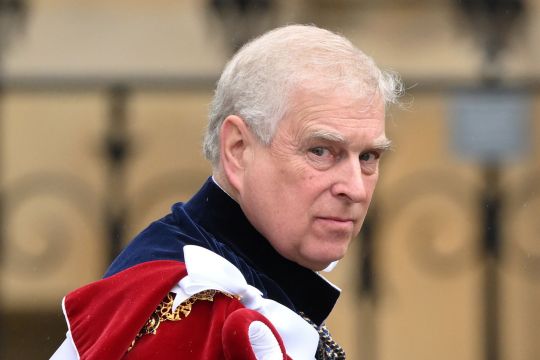
So in conclusion, I say top… until you get the dick in him.
35 notes
·
View notes
Text
A list of season 2 cast and crew members, confirmed and speculated
I will try and keep this updated
Not counting the obvious ones
Please note that this is a list of both cast and crew members, so PAs and such are also included and not just actors
sorry in advance that 90% of my sources come from instagram
A
Aaron Morton (Camera) - he’s listed on the very last picture as the camera-man
Adam Stein (Writer)
Alan F. (English solider)
Alexandria S.
Alistair Gregory - from this tweet so uncertain, but followed me back on my bts instagram account so seems to have some interest in ofmd
Amy Tunnicliffe
Amanda M. (Wedding guest)
Andrew DeYoung (Director) - I don't remember if there was any other reason than the fact that he was in Aotearoa during filming
Andy Rydzewksi (Cinematographer)
B
Brian Badie (Hairstylist)
Bronson Pinchot ("Torturer")
Bryn Seager - I don't remember why but I follow him
Bryony Matthew (Food stylist)
C
Cora Montalban (Makeup and/or hairstylist) - I believe she was tagged in an instagram story once, and she's followed by a ton of cast and crew members
D
Daniel Fernandez (Spanish priest)
David G. (Stand in)
Dennis Bailey (Hairstylist) - Leslie revealed that he's there.
Don A. (Swampy Town folk)
E
Eliza Cossio (Writer)
Erroll Shand (Prince Ricky)
F
Fernando Frias (Director)
G
Grant Lobban
Gypsy Taylor (Costume designer)
H
Haroun Barazanchi - I'm gonna be honest, I have no memory of why I suspect this guy will be working on season 2, but I follow him hgjfdks
I-J
Jaden McLeod
Jason Samoa, possibly spotted on location
Jemaine Clement, pretty sure this is only based on his friendship with Rhys and Taika tbh
Jes Tom (Writer)
Jessica Lee Hunt (Makeup artist) - followed by a ton of crew and cast members and I believe she's been tagged in instagram stories and such
John Mahone (Writer)
Jono Capel-Baker (Groom)
Jonno Roberts didn't get the role from his audition, but could still have gotten a different role - hung out with Ruibo
K
Karl L. (Action extra)
Kate Fu
Kathleen Zyka Smith ("Red Flag")
Kosuke Iijima (Fabricator/Sculptor?) - due to interaction on this post
Kris Gillan (Fabricator/Sculptor)
Kura Forrester - followed by quite a few cast and crew members, but I don't remember if there was anything else to it
L
Laura Stables (SFX makeup artist)
Leanne - followed by cast and crew
Lee Tuson
Leslie Jones (Spanish Jackie) - she's spoiled this so many times, but gjfhdks
Leyla - followed by a lot of cast and crew members, don't remember if there was more to it than that
Luke V. (Stand in)
M
Ma Christina C. ("Red Flag")
Madeleine Sami (Archie)
Maddie Roche (PA) - read the tags idk lmao
Maddy Powell - this double rainbow photo is for sure from the first day of filming and nathan commented on her post
Maggie Philips (Music supervisor)
Mark Black (Henchman)
Mark Mitchinson (Hornigold)
Martin D. (Wedding guest)
Megan Vertelle (Set decorator)
Mike Berlucchi (Cinematographer)
N
Nareemun S. (Stand in)
Nat Van Halle - Has been hanging out on set with crew and cast
Natalie Torres (Writer)
Nathan Foad (Lucius)
Nathaniel Goodman - listed as camera-man
Nicola Dove (Photographer) - I'm guessing she'll be the season 2 version of Aaron Epstein
O-P
Paul Murphy (Director)
Q-R
Ra Vincent (Production designer) - He's the one in a white t-shirt and sunglasses or smth on his head
Rachel Forman - followed by a lot of cast and crew (including taika, nathan, madeleine, alex etc.) and Fernando made a post saying goodbye to Aoteroa, and she commented and he said he would miss her
Rachel House - Suspected due to her hanging out with cast and crew, but could be nothing
Richard B. ("Republic of Pirates")
Ringo R. ("Republic of Pirates")
Rory Davis - followed by cast and crew
Ruibo Qian
S
Sha M. ("Republic of Pirates")
Simone Nathan (Writer)
T
Tammy Davis - pretty sure it's just based off of this post which could be nothing
Tara Lauren (Makeup artist)
Tenesse Murfitt (Hairstylist) - followed by a ton of cast and crew members, and I believe she's been tagged in instagram stories
Tino L. (Stand in)
Toa Paranihi - I honestly don't remember why this was speculated or possibly confirmed, but I follow him on instagram and so do a couple of the cast and crew members
Ty Evander
U-V
Vanessa Vandy (Cinematopgrapher) - don't remember why i suspect her, but i follow her
W
Will Giles (Set designer)
X-Z
Zach Douglas
Zackery Alexander Stephans (Writer)
Zak Enayat - he has just been very openly working on the show, and is followed by cast and crew members
Zayre Ferrer (Writer)
#ofmd#our flag means death#ofmd spoilers#ofmd s2#crew list#hopefully i didn't forget anyone but lmk if i did
74 notes
·
View notes
Note
I know there's a lot of answers out there for this question, but personally like what do you think are the best beatle books to read? Like what's the best for you?
hello anon! I'm hyperfixated so I'll read pretty much anything on them tbh. I do like to read the more anecdotal stuff because I love gossip lol - and some of them can be so revealing (both of the Beatles themselves and the authors). But I'll read and have enjoyed lots of stuff: the big biogs, memoirs, fan accounts, academic studies, that novel by Paul's ex publicist.
anyway, here's the list of Beatles books I've read all the way through and what rating out of 5 I'd give them. The books I've rated highest have generally been the big biographies just because I think they tend to say more and tell a fuller story, since obvs that's their purpose, so they're a more satisfying read. My ratings are based on a random combo of what they can tell us about the Beatles, how interesting I find them historiographically/as Beatles reception, and how much I enjoyed reading them.
★★★★★
One Two Three Four: The Beatles in Time (Craig Brown)
The Beatles: The Authorised Biography (Hunter Davies)
Shout!: The True Story of the Beatles (Philip Norman)
Love Me Do!: The Beatles' Progress (Michael Braun)
Can't Buy Me Love: The Beatles, Britain, and America (Jonathan Gould)
The Man Who Gave the Beatles Away: The Amazing True Story of the Beatles' Early Years (Allan Williams & William Marshall)
★★★★☆
The Love you Make: An Insider's Story of the Beatles (Peter Brown & Steven Gaines)
Backbeat: Stuart Sutcliffe - The Lost Beatle (Alan Clayson & Pauline Sutcliffe)
The Gospel According to the Beatles (Steve Turner)
Lennon vs. McCartney: The Beatles, Inter-band Relationships and the Hidden Messages to Each Other in Their Song Lyrics (Adam Thomas)
Beatle! The Pete Best Story (Pete Best & Patrick Doncaster)
Dreaming the Beatles: The Love Story of One Band and the Whole World (Rob Sheffield)
A Cellarful of Noise (Brian Epstein)
Waiting for the Beatles: An Apple Scruff's Story (Carol Bedford)
John (Cynthia Lennon)
John Lennon: In My Life (Pete Shotton & Nicholas Schaffner)
Summer of Love: The Making of Sgt. Pepper (George Martin with William Pearson)
★★★☆☆
John, Paul & Me Before the Beatles: The True Story of the Very Early Days (Len Garry)
The Beatles and Me on Tour (Ivor Davis)
A Twist of Lennon (Cynthia Lennon)
At the Apple's Core: The Beatles from the Inside (Denis O'Dell with Bob Neaverson)
The Guitar's All Right as a Hobby, John (Kathy Burns)
With the Beatles (Alistair Taylor)
The Day John Met Paul: An Hour-By-Hour Account of How the Beatles Began (Jim O'Donnell)
The Beatles: I Was There (Richard Houghton)
All Our Loving: A Beatle Fan's Memoir (Carolyn Lee Mitchell & Michael Munn)
Rock Bottom (Geoff Baker)
Once There Was a Way: What if the Beatles Stayed Together? (Bryce Zabel)
Like Some Forgotten Dream: What if the Beatles Hadn't Split Up? (Daniel Rachel)
Dylan, Lennon, Marx and God (Jon Stewart)
Paul is Undead: The British Zombie Invasion (Alan Goldsher)
★★☆☆☆
Paperback Writer (Mark Shipper)
18 notes
·
View notes